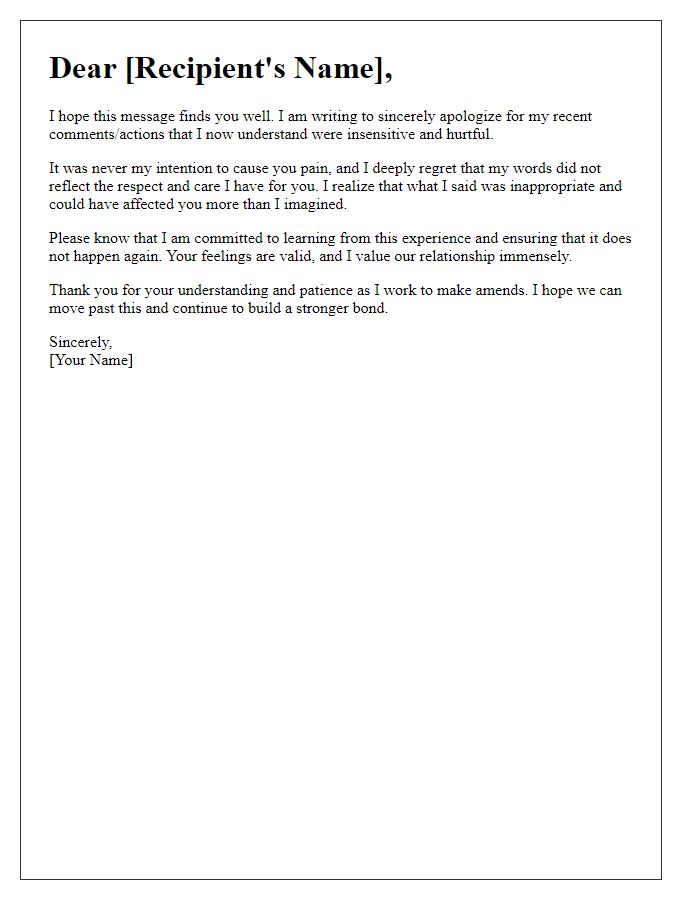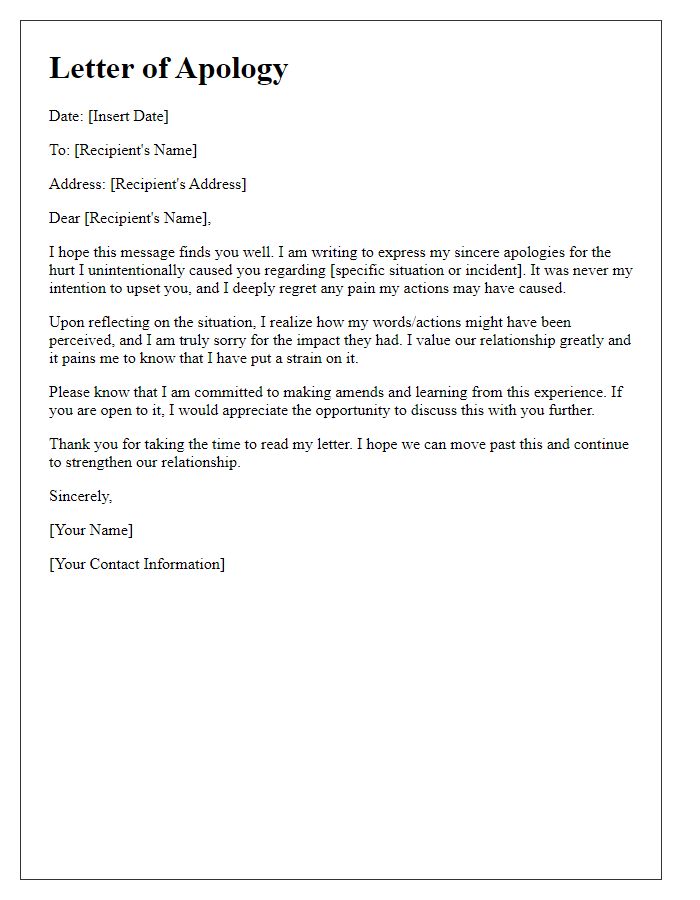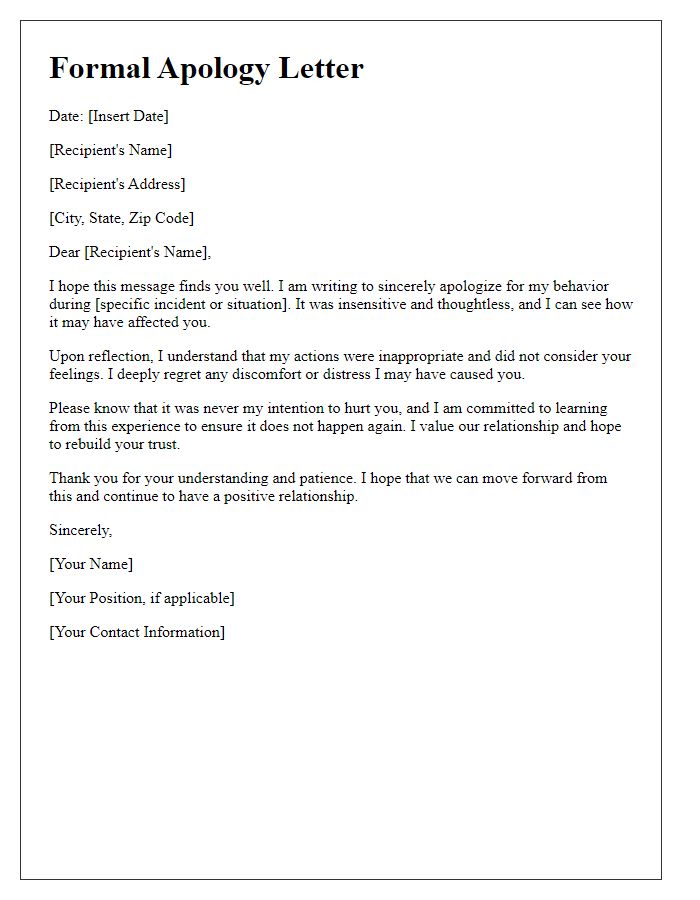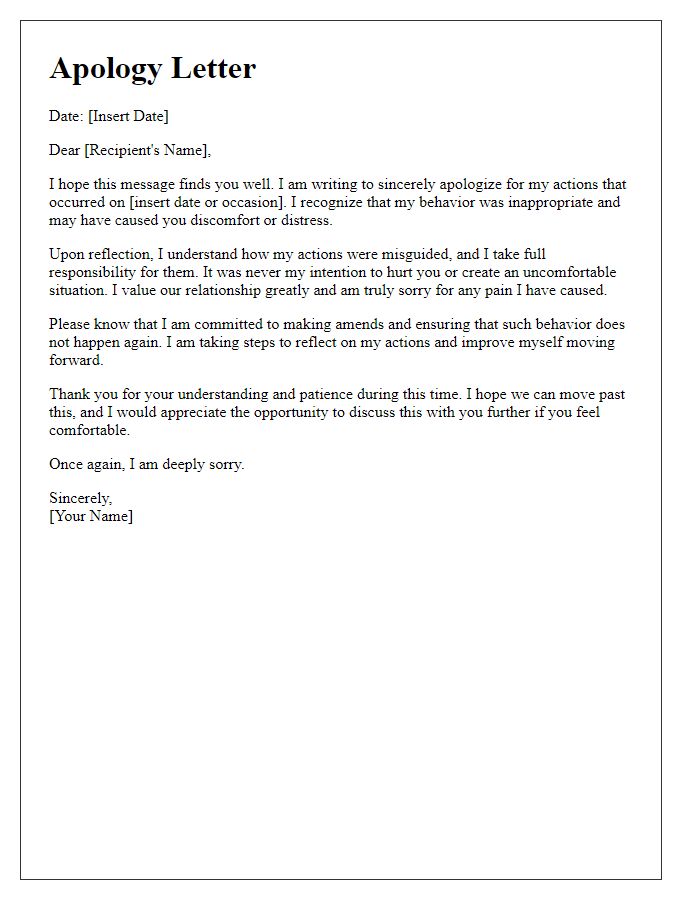Have you ever found yourself in a situation where you unintentionally hurt someone's feelings? It's a common scenario, and acknowledging our insensitivity can be a challenging yet crucial step toward rebuilding trust. Crafting an appropriate apology letter not only shows your genuine remorse but also sets the stage for healing the relationship. If you want to learn how to express your sentiments effectively, keep reading for helpful tips on writing an impactful apology letter.

Sincere Apology
Apologizing for being insensitive requires genuine acknowledgment of one's actions and their impact. An effective apology articulates the specific behavior that caused harm, reflects an understanding of the emotional distress it caused, and expresses sincere remorse. It can also include a explanation of steps towards making amends and future changes to ensure greater sensitivity. Crafting a heartfelt message can significantly repair relationships and demonstrate personal growth.
Acknowledgment of Mistake
Acknowledgment of emotional insensitivity is crucial in maintaining healthy relationships. Recognizing the impact of hurtful words or actions on others fosters empathy and understanding. Unintentional comments during events, such as a friend's birthday party or a family gathering, can lead to feelings of distress or discomfort. Apologizing acknowledges the feelings of those affected and helps to rebuild trust. Reassessing the situation can provide clarity on how the remarks might have been perceived, emphasizing the importance of thoughtful communication. Embracing vulnerability in expressing regret can pave the way for healing and deeper connections.
Understanding Impact
Insensitivity can profoundly affect relationships and emotional well-being. An apology requires acknowledging the specific incident, such as remarks made during a conversation that inadvertently hurt another person's feelings. Emotional impacts can include feelings of sadness or isolation, especially if the individual involved was already experiencing personal challenges. An effective apology should express genuine remorse, highlight the importance of the relationship, and demonstrate a commitment to understanding the other person's perspective. Situational awareness, particularly regarding cultural sensitivities or shared experiences, is crucial in ensuring the relationship can move forward positively.
Empathy and Compassion
Experiencing a lapse in sensitivity can lead to unintended harm in relationships, emphasizing the importance of empathy and compassion in interpersonal interactions. Insensitive remarks or actions can cause emotional distress, particularly in vulnerable individuals, which may lead to feelings of alienation or hurt. Acknowledgment of this impact is vital, as it fosters understanding and healing while allowing for personal growth. Seeking forgiveness involves recognizing the specific behavior, taking accountability, and expressing a sincere commitment to improve future interactions. Building emotional intelligence and practicing active listening can significantly enhance relationships, cultivating a deeper understanding of others' experiences and feelings.
Commitment to Change
Feeling remorseful for insensitivity can be an important turning point in personal growth. Acknowledging the hurt caused by careless words or actions fosters accountability. Understanding the context of hurtful interactions is essential; for instance, recognizing cultural differences or personal experiences can shed light on the impact of one's behavior. Committing to change involves actively listening to the affected individual and engaging in continuous education on empathy and mindfulness. It is crucial to set specific goals for improvement, such as attending workshops, seeking feedback, and practicing thoughtful communication in diverse environments, thereby ensuring that future interactions are respectful and considerate.













Comments